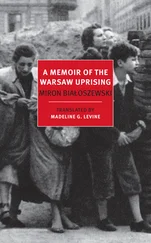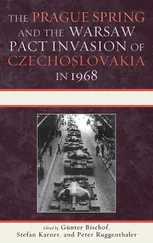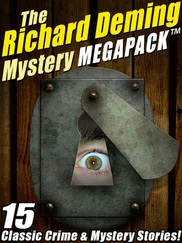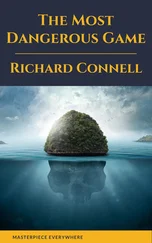I’ve always believed I survived because of meeting Erik and taking down his story. It’s the only answer I have for why I am here and six million others are not. I’m aware that my explanation doesn’t make logical sense, but we all know by now that logic is not God’s strong point.
As soon as I had the strength, I made my way back to Johann’s house and dug up The Warsaw Anagrams. I learned from neighbours that he’d been executed the evening I’d been captured.
Lately, I’ve begun to cling to my memories of Johann when I begin to believe what the Nazis tried to prove to us all – that anyone can be made to betray those they love.
I moved back to Warsaw and opened a printing house again. Occasionally, I’d show The Warsaw Anagrams to the people I trusted, but Christian friends didn’t want to read about what the Nazis and their Polish helpers had done to their one-time neighbours, and the handful of Jews who’d returned were too fragile to revisit the past.
Erik and I wrote his story and it helps me pass my days easier knowing that we did it together. And I think the very act of reading is important – it means we have a chance to participate in a culture that the Nazis couldn’t kill.
Knowing you have done one good thing – no matter how small – is a comfort that no one can take away.
I like the tingling in my fingertips when I choose the type for the books I print. I like to have ink stains all over my hands. I like to invent words for the new language Erik wanted us to have.
Herzsterben – the death one feels in one’s chest on pushing away a starving beggar .
I try to live without expectations. I try to accept people as they are. I try to celebrate waking up every morning .
Zunfargangmeyvn – a connoisseur of sunsets; someone who has learned to savour what others take for granted.
And I try to live in a world where the most soft-spoken people win all the arguments .
Noc die Zweite.
The name of my dog. He’s a wiry dachshund who sleeps in my bed, his snout next to mine, and his snoring eases me into my dreams.
I try never to go to sleep without him. Too many memories await me if I enter the darkness alone.
Like almost everything else in the Warsaw ghetto, Stefa’s apartment house was blown up by the Nazis during the Ghetto Uprising of April 1943, then levelled by the Russians when they took control of the city. All those rutted old streets – and all we had suffered – were gone. Except inside our heads.
Some day, weeds and trees will have covered up all the rubble. And after that, when the developers have enough złoty, buildings will go up – even steel and glass hotels with fountains in the lobby. Tourists will spread their gaze over an urban landscape being born again, and they will whisper to their children , Hundreds of thousands of Jews were imprisoned here for years, but the kids will see only the maze of construction in front of their eyes and an army of helmet workers scurrying back and forth. They’ll ask if they can go swimming now in their hotel pool.
And why shouldn’t they?
Those who feel guiltiest will try to make us doubt the existence of all the bones that lie buried under the Polish topsoil and all the ash scattered through the Polish forests .
A walnut tree that was two feet high. Starting again like the rest of us.
An old man passing in the street spotted me staring at the spindly trunk and identified it. I’d thought it was a hazel. ‘No, it’s definitely a walnut,’ he told me, and he smiled at me as if it was a good omen.
I guess we’ll know if he’s right when we see the kind of nuts it gives us, five or ten years from now. Sometimes we need to wait a long time to know the meaning of what’s happening right at this very second.
I found the walnut tree growing out of the earthen pit where the courtyard of Stefa’s building had been.
I looked for Erik all over the city, but I never found him. How long must ibburs wander the earth? I’ve asked learned rabbis from Paris, Marseille and Istanbul, but none could tell me. ‘Their time may not be like ours,’ one of them explained to me, but I already knew that.
I like to think that Erik found Adam and Stefa, and during the easy days of summer, when the high, midday sun turns the rooftops to gold, I can almost convince myself that he must have. At night, however, when I’m listening to the rise and fall of Noc’s breathing, and beyond him to the loose web of silence that means that he and I are alone in a city that was once mine and no longer is, I trust only loneliness. I’m not much good at happy endings, just as Erik sensed .
While reading about the death camps a few years ago, I stumbled upon the identity of the official at Buchenwald to whom Rolf Lanik must have given his ‘gift’ of skin taken from Adam, Anna and Georg: Ilse Koch, wife of the commandant of the Buchenwald camp, Karl Otto Koch. In her trial for murder in 1951, German prosecutors revealed that she had made keepsakes – including lampshades – out of the skin of prisoners. Apparently, she was particularly fascinated by distinctive tattoos and often had men killed and their skin tanned so that she could display them in her home.
Lanik’s effort to win Ilse Koch’s gratitude does not seem to have won him the transfer to Buchenwald that he coveted, however; there is no record of his ever having served at that camp, which was overseen by Karl Otto Koch from July 1937 to September of 1941, when he and his notorious wife moved to the Majdanek camp.
Was it really Rabbi Kolmosin – the much-feared mystic Erik met in the Lipowa Street Labour Camp – who caused him to return as an ibbur? That is indeed what he led me to believe, though he was never sure. And yet I sometimes think that Erik may not have been entirely honest with me – that he may have had more to do with his unusual destiny than he was prepared to admit. After all, there were times when he seemed to let it slip that he was not the confirmed atheist he claimed, and that, at the very least, he knew about some traditional Jewish mystical practices. For instance, just after Stefa’s suicide, he chanted the names of everyone he’d ever loved until he lost his voice. Would a secular Jew really have made that effort? Additionally, Erik made it clear to me that he came to believe in the magical efficacy of names – a central tenet of kabbalah. After re-reading The Warsaw Anagrams on numerous occasions over the last few years, I have been forced to consider – though this remains just a speculation – whether Erik worked with Rabbi Kolmosin or some other unnamed sage in the labour camp in order to bring about his own return from the dead. As to why he wouldn’t have admitted this to me, there is a strong Jewish tradition that forbids such arcane and dangerous practices, and I suspect that he may have feared my judgement – or the judgement of any god he might have begun to believe in.
I mention this because I desperately want to do justice to Erik as the complex human being that I came to know, especially because it was he who gave me back a reason to live. But I must admit that the how of his reappearance among the living is no longer very important to me. Now that we know the full scope of the Nazi genocide – that the Germans almost succeeded in annihilating us – it’s only the why of his return that I still speculate about.
And, of course, I still wonder about the people whom he describes in The Warsaw Anagrams .
It was Dawid Engal, the superintendent of the building where Erik lived in the ghetto, who was able to tell me what happened to several of them. In the Before Time, he had been a professor of Polish literature at the University of Warsaw, and a colleague of his there was able to tell me that he emigrated to Brooklyn just after the war and found employment as a German teacher at Lafayette High School. We began corresponding during the summer of 1949.
Читать дальше












